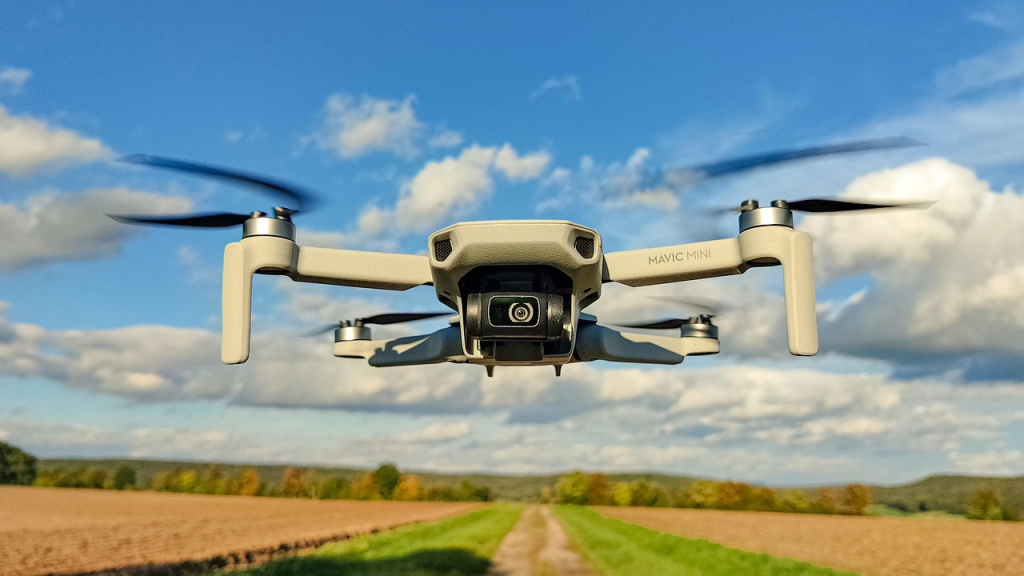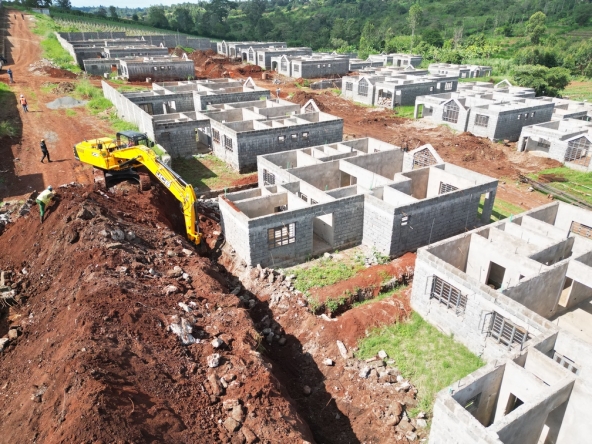Kenya’s construction industry, valued at over KSh 600 billion annually, is entering a new era of transformation. As cities like Nairobi, Kiambu, and Machakos continue to expand, traditional building methods are giving way to smarter, data-driven, and automated systems. The integration of Artificial Intelligence (AI) and robotics in construction is changing how projects are planned, built, and maintained — improving efficiency, reducing waste, and enhancing safety across job sites.
Across Nairobi’s fast-changing skyline, technology is quietly redrawing the boundaries of what’s possible in real estate. From design automation to predictive project management, AI in construction Kenya is no longer a futuristic concept — it’s a growing reality. Developers, engineers, and architects are now integrating robotics and artificial intelligence to boost efficiency, cut costs, and improve precision.
This technological shift is not just global; it’s taking root right here at home. Kenyan developers and contractors are experimenting with AI-based design, drones for site inspection, and robotic systems for repetitive or hazardous tasks.
“AI and automation are no longer futuristic ideas; they’re reshaping how Kenyan construction firms plan, cost, and execute projects,” says Eng. David Muriuki, a Nairobi-based structural engineer specializing in digital construction systems.
Read Also: Where Vision Takes Root: The Story of Willstone Homes and the Seeds of a New Kenyan Dream
How AI is Transforming Construction Workflows in Kenya
AI in the construction sector works by collecting and analysing data from past projects, current site conditions, and ongoing performance metrics. The result is predictive insight — helping project managers anticipate problems before they arise.
- Project Planning and Scheduling
AI-powered software like Autodesk Construction Cloud or PlanRadar helps Kenyan developers optimise schedules, track progress, and forecast delays using real-time data from the site. In Nairobi’s fast-paced estate developments, this improves coordination and delivery timelines. - Design Optimisation and BIM Integration
Building Information Modelling (BIM) tools integrated with AI allow architects and engineers to simulate structural performance, cost implications, and material usage before construction begins. This is critical for urban projects in areas like Kilimani and Westlands, where space and resources are limited. - Predictive Maintenance
For completed buildings, AI systems can monitor wear and tear in real time. Sensors embedded in structures relay data about temperature, vibration, or humidity — flagging potential structural issues early. - Quality Control through Computer Vision
Cameras paired with AI algorithms can scan construction sites, detecting deviations from design plans or unsafe conditions. Kenyan developers are beginning to adopt these systems to ensure compliance with the National Construction Authority (NCA) safety standards.
Robotics — The Future Workforce of Kenyan Construction

Robots are no longer the stuff of science fiction; they’re entering Kenyan construction sites. From robotic bricklayers to 3D concrete printers, automation is helping developers meet high housing demand with precision and consistency.
- Bricklaying Robots: These machines can lay over 1,000 bricks per hour, reducing human fatigue and maintaining uniform wall alignment.
- Concrete 3D Printing: Kenya is seeing early interest in 3D-printed homes, where robotic arms extrude layers of concrete to build walls. This method saves time and materials while allowing complex architectural designs.
- Surveying Drones: Drones fitted with LIDAR sensors capture topographical data faster than traditional methods, cutting survey times by up to 70%.
- Robotic Welding and Rebar Tying: Especially useful in high-rise projects in Nairobi’s CBD, robotic arms ensure precision and safety in repetitive structural tasks.
Table: Comparison — Traditional vs AI/Robotics-Enabled Construction
| Aspect | Traditional Construction | AI & Robotics Construction |
|---|---|---|
| Project Duration | 12–24 months typical for estate projects | 30–50% reduction through automation |
| Error Margin | High — human-dependent | Significantly lower due to predictive modelling |
| Labour Demand | Heavy manual labour | Reduced, more skilled technical workforce |
| Safety Risk | Frequent site accidents | Lower risk via robotic systems and sensors |
| Material Waste | 10–20% typical | Below 5% with AI precision control |
| Cost Predictability | Moderate | High — real-time cost tracking via AI tools |
Barriers to Adoption in Kenya
Despite the promise, AI and robotics in Kenya’s construction industry face several hurdles:
- High initial investment costs for importing equipment and training staff.
- Limited local expertise in AI modelling and robotic operations.
- Resistance to change from traditional contractors used to manual workflows.
- Regulatory gaps, as Kenyan building codes haven’t fully integrated digital automation standards yet.
Nonetheless, forward-looking property developers and large engineering firms are already exploring hybrid solutions — blending automation with human expertise to achieve faster and safer outcomes.
Read Also: Interior Finishes That Add Value to Kenyan Homes
Case in Point — Smart Estate Developments

Some Nairobi developers have begun using AI-driven scheduling systems and drone-based progress tracking to manage large gated communities. The technology allows for real-time inspection reports shared with investors, engineers, and project managers remotely. Such innovations are helping developers meet timelines even amid unpredictable weather or supply delays — a critical factor in Kenya’s competitive housing sector.
The Bigger Picture — Sustainable and Smarter Construction
AI and robotics also contribute directly to sustainability goals. Automated systems minimise material waste, enable precise energy modelling, and promote green construction practices. By optimising resource use, Kenya’s construction sector can significantly reduce its carbon footprint — aligning with the Vision 2030 target of creating resilient, smart cities.
The Rise of Intelligent Construction
As Kenya races to meet its housing demand, AI in construction Kenya stands out as a powerful ally — helping developers build faster, safer, and smarter. The rise of robotics and data-driven systems is transforming the industry’s DNA, enabling consistent quality from foundation to finish. For forward-thinking developers, this evolution is more than a trend; it’s a strategic pathway toward a resilient and tech-enabled future. In this unfolding era, the measure of progress will not only be in concrete and steel, but in how intelligently we build the homes and cities of tomorrow.




